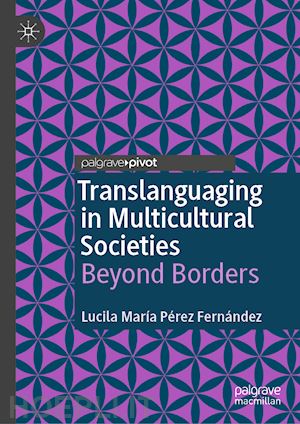
Questo prodotto usufruisce delle SPEDIZIONI GRATIS
selezionando l'opzione Corriere Veloce in fase di ordine.
Pagabile anche con Carta della cultura giovani e del merito, 18App Bonus Cultura e Carta del Docente
This book delves into the multifaceted concept of translanguaging, offering a comprehensive examination from its foundational theories to its practical applications. The author provides a nuanced understanding of translanguaging, differentiating it from code-switching and elucidating its core premises, then explores translanguaging practices in early multilingual societies, colonial contexts, and postcolonial and globalized settings. Theoretical foundations are thoroughly explored in the second part of the book, covering sociolinguistic theories and their application to translanguaging, cognitive approaches emphasizing metacognition and cognitive flexibility, psycholinguistic perspectives, and sociocultural theories aligning with translanguaging. Part III examines practical aspects of translanguaging, focusing on its implementation in multilingual classrooms, multicultural communities, and professional settings. The book demonstrates translanguaging's role in community development, cultural heritage preservation, and fostering social cohesion through case studies in diverse contexts, including business, healthcare, and legal settings. Strategies and best practices for integrating translanguaging into language teaching are discussed, along with its benefits and challenges in education. The final section, Part IV, anticipates future directions for translanguaging, exploring emerging technologies such as virtual reality, augmented reality, artificial intelligence, and machine learning. The book also examines translanguaging's potential in linguistic preservation, particularly in the context of indigenous languages, as well as its role in achieving Sustainable Development Goals, including multilingual education and reducing linguistic inequalities. This book will be of interest to researchers, scholars, and educators interested in language studies, sociolinguistics, education, and interdisciplinary fields.
1. Introduction.- PART I. UNDERSTANDING TRANSLANGUAGING.- 2. Defining Translanguaging.- 3. Historical Overview.- 4. Language policies and translanguaging.- PART II. THEORETICAL FOUNDATIONS.- 5. Sociolinguistic Theories and Translanguaging.- 6. Cognitive Approaches to Translanguaging.- 7. Psycholinguistic Perspectives.- 8. Sociocultural perspectives.- PART III. TRANSLANGUAGING IN PRACTICE.- 9. Translanguaging in Multilingual Classrooms.- 10. Translanguaging in Multicultural Communities.- 11. Translanguaging in Professional Settings.- PART IV: FUTURE DIRECTIONS.- 12. Translanguaging in Emerging Technologies.- 13. Translanguaging in Linguistic Preservation.- 14. Translanguaging and Sustainable Development Goals.- 15. Conclusion.
Lucila María Pérez Fernández is a Lecturer at the Universidad de Cantabria, Spain, where she specializes in teaching English as a foreign language, focusing on subjects like Development of Speaking and Writing Skills in contexts of Content and Language Integrated Learning (CLIL) and Foreign Language Didactics for Early Childhood Education and Primary Education Teaching programs. Her main research interests include Foreign Language Learning and Bilingual Education.











Il sito utilizza cookie ed altri strumenti di tracciamento che raccolgono informazioni dal dispositivo dell’utente. Oltre ai cookie tecnici ed analitici aggregati, strettamente necessari per il funzionamento di questo sito web, previo consenso dell’utente possono essere installati cookie di profilazione e marketing e cookie dei social media. Cliccando su “Accetto tutti i cookie” saranno attivate tutte le categorie di cookie. Per accettare solo deterninate categorie di cookie, cliccare invece su “Impostazioni cookie”. Chiudendo il banner o continuando a navigare saranno installati solo cookie tecnici. Per maggiori dettagli, consultare la Cookie Policy.